
Omodos (Omodos, the Greek name 'Ομοδος) - traditional Cypriot village in the Troodos mountains (altitude about 900 meters above sea level), the Limassol district, approximately 40 km from the historic centre of Limassol and 86 kilometres from the centre of Nicosia.
Currently, Omodos is a tourist village that has preserved its ancient beauty and flavor, anciently famous for wine production and fruit orchards, narrow streets, picturesque views, tavernas, and ancient stone buildings with carved wooden balconies, special place among which occupies the monastery of the Holy cross.
Stone monastery of the Holy (Honest or Holy) cross or the monastery of Timios Stavros (Timios Stavros Monastery).
This monastery is one of the oldest and most historic monasteries on the island of Cyprus.
Currently, the monastery of the Holy cross is not valid for its intended purpose. For parishioners open the Church. The temple holds several important relics, including a piece of the true cross and the Holy rope of hemp that the Romans used to tie Christ to the Cross.
The monastery is quite characteristic architecture - a large two-story complex in the shape of the Greek letter Π, framed by arched galleries surrounding the main Church of the Holy cross from the North, West and South.
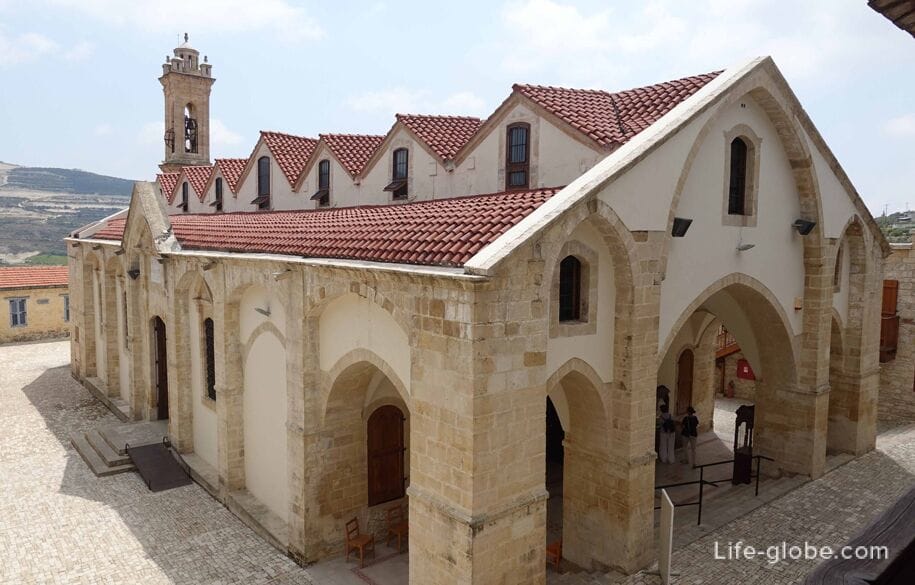
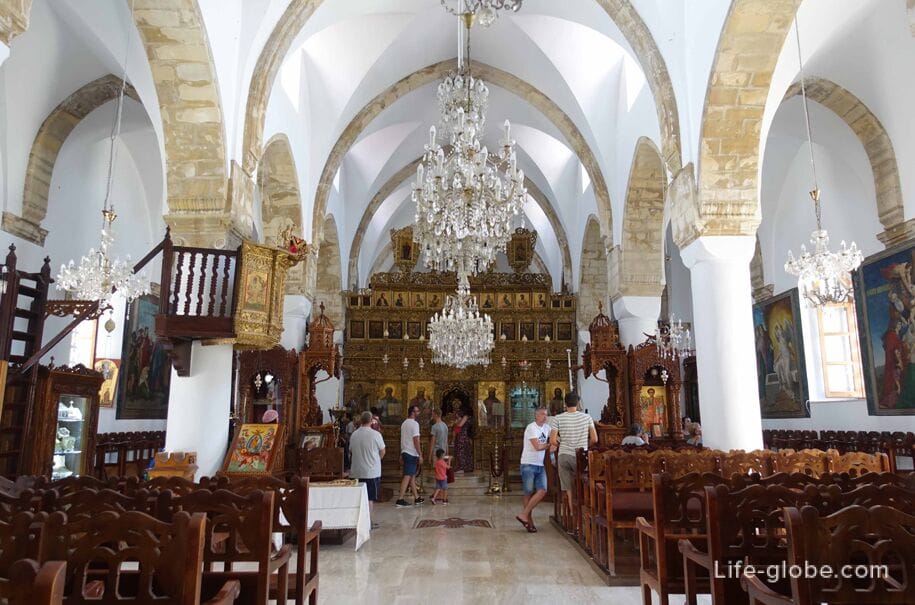
In the premises of the monastery opened a Museum complex, where you can visit a few rooms:
- the hall of the Synodicon, in which stand the wooden ceiling and the "throne" of Timios Stavros, carved from a walnut tree;
- cell, say the one which, according to legend, stayed Queen Helena, who has given the monastery and its main relic - a particle of the Holy cross;
- Museum of Byzantine art, representing a vast collection of icons and ecclesiastical utensils;
Museum of national struggle for the liberation of Cyprus from 1955 to 1959 read More about monastery of the Holy cross and the Museum complex of the monastery...
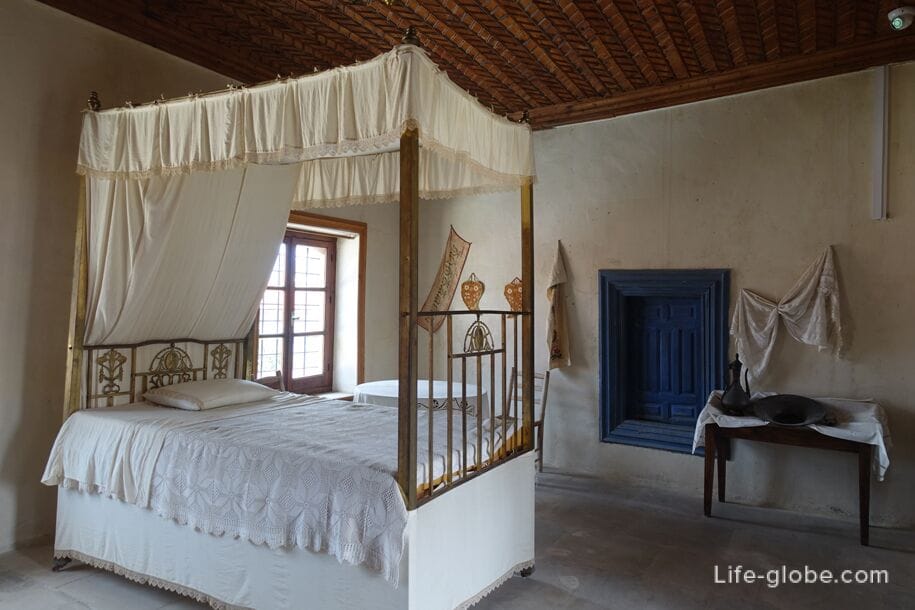
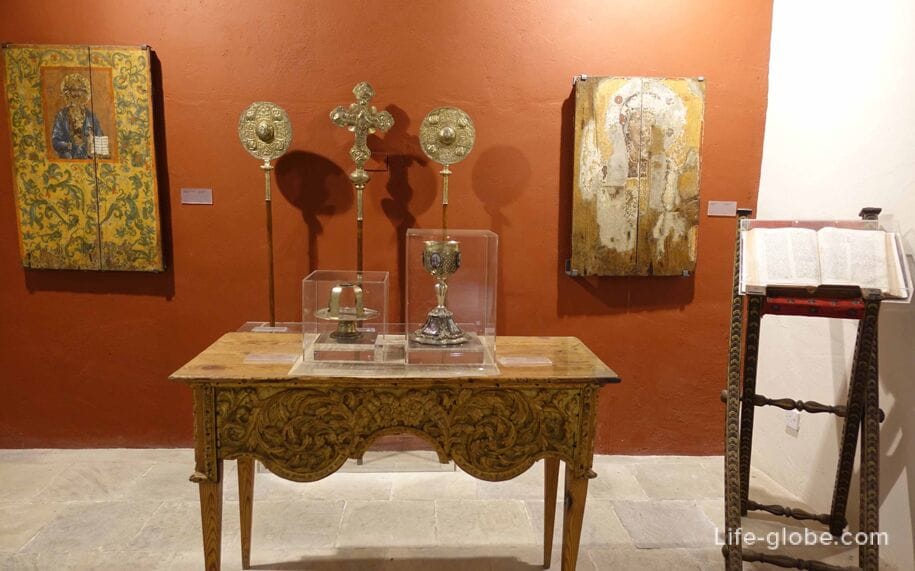

The Central square of Omodos is the heart of the village - perhaps one of the most attractive and crowded places in Omodos.
A small area of an elongated shape, the perimeter of which are taverns, cafes and shops, and richly decorated with greenery and flowers.
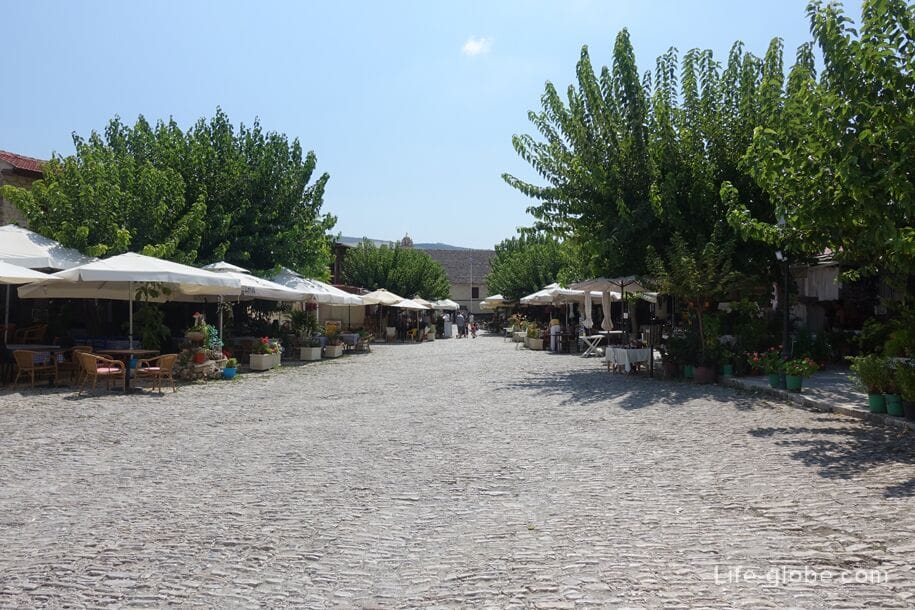
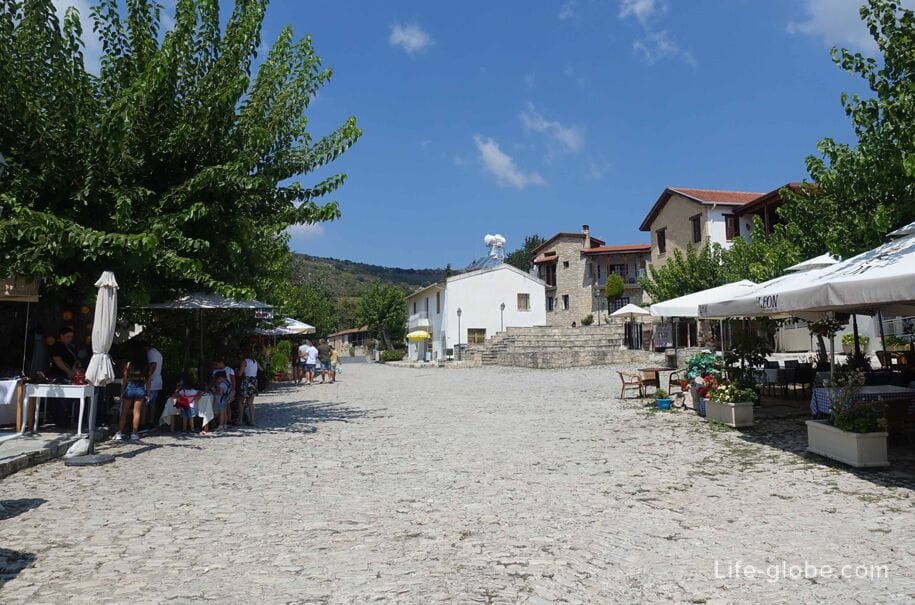
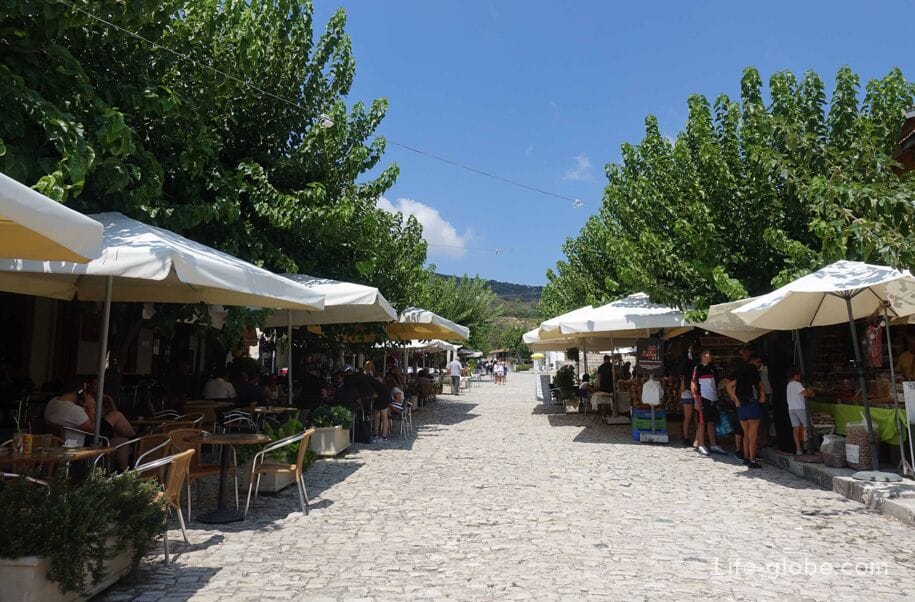


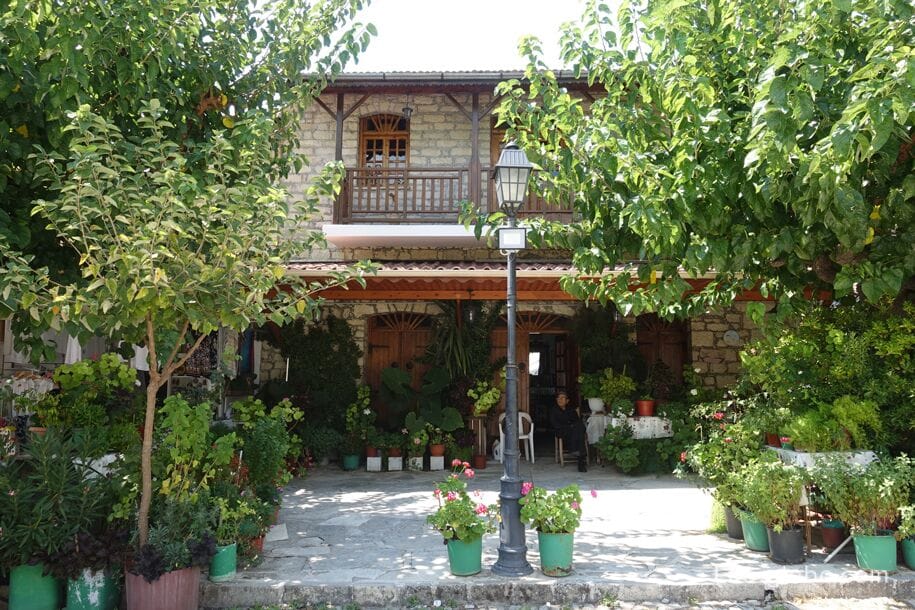
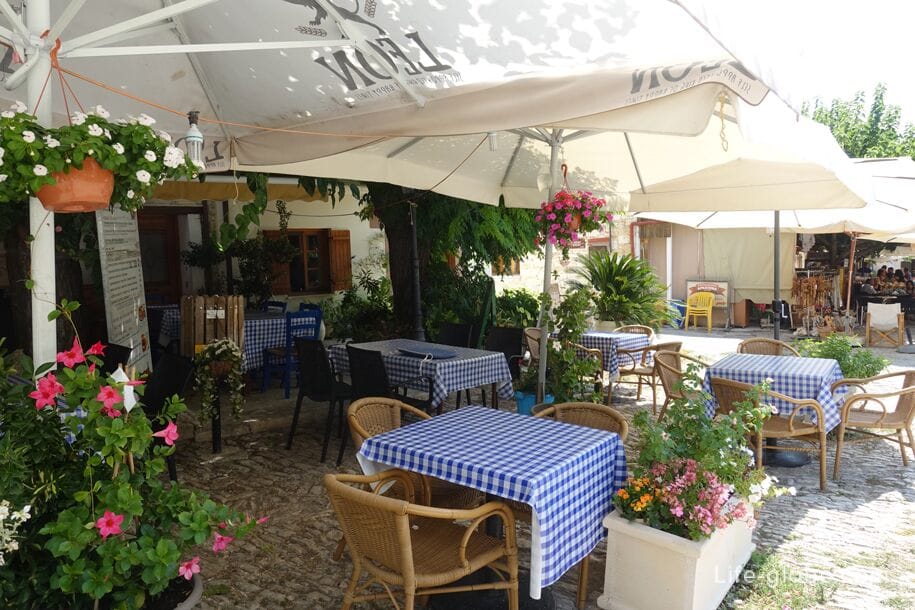
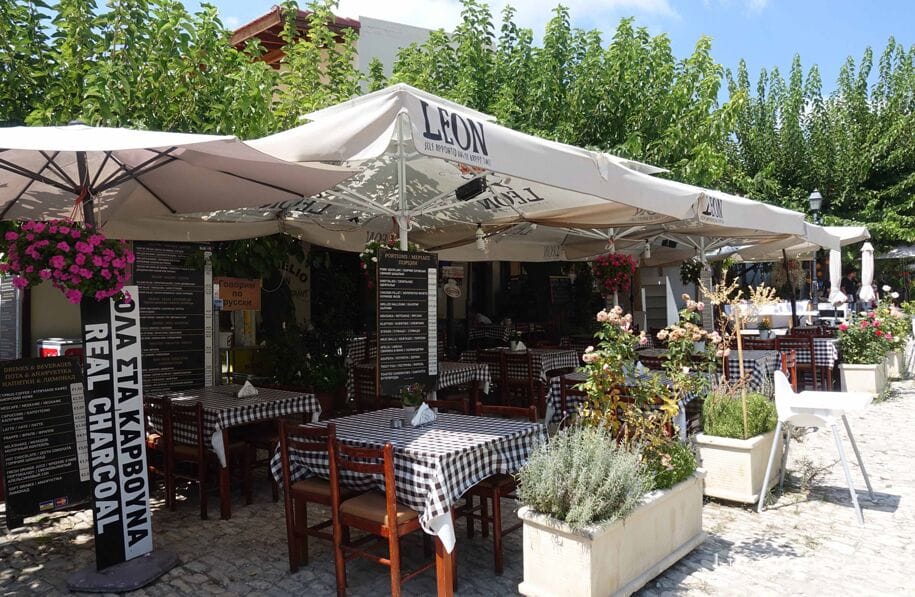
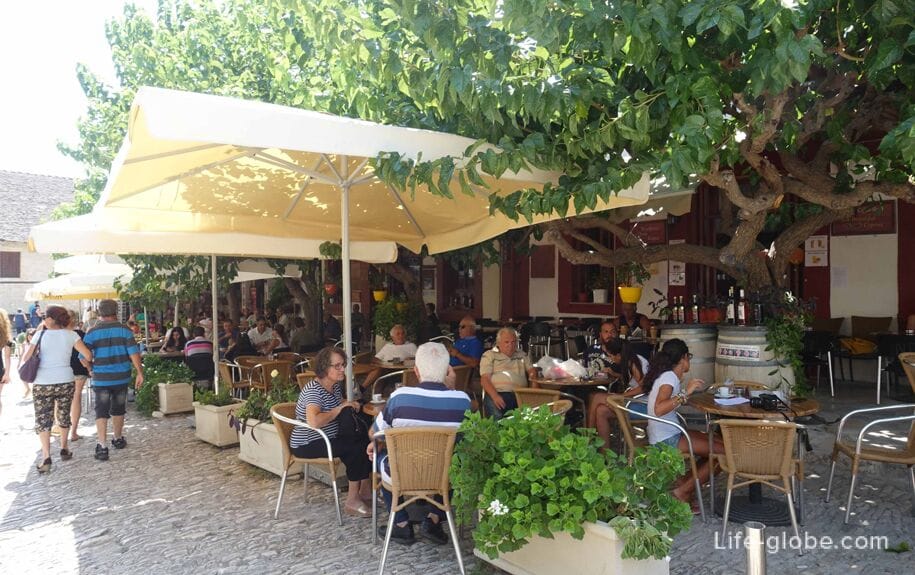
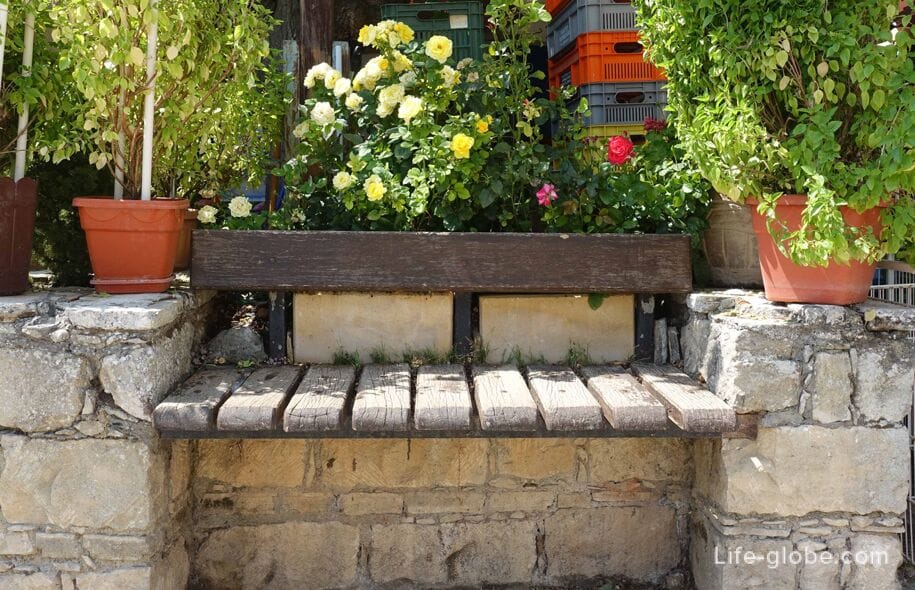
The Omodos village that is located in the geographical region of the wine villages of Cyprus, surrounded by mountains, the tallest of which are Athames (1,153 m) and Kremmos Loony (Slope Loony, 1,092 m) and is considered the area with the most ancient vine and the most exquisite wines on the island of Cyprus.
Mountains and mild climate encourage the cultivation of the vine and fruit orchards (Apple, plum, pear, peach and apricot), as in Omodos and in the surrounding vicinity.
Plus be the perfect types of Omodos, the abundance of greenery and a small chill that is felt even on a hot summer day.
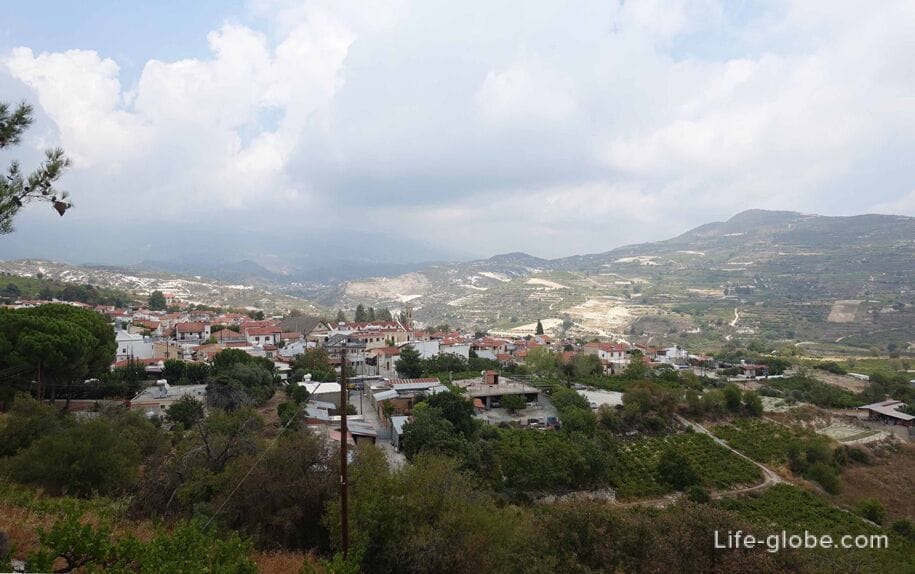
Primitive tools, the hoe and the plough, but first and foremost, diligence and hard work, the villagers were able to turn wild in high hills of land suitable for the cultivation of the vine. From ancient times until today the vine is a unique source of income for Omodos.
Mediaeval winepress, found near the Holy cross monastery, is evidence to the fact that the production of wine took place in Omodos since ancient times.
According to legend, the wine Athames good quality and with sweet smell, which got its name from the mountain of the same name, was the cause of the conquest of the island by Sultan Selim II the Drunk. He wanted this famous wine belonged only to him.
In the old days wines were made by growers who sold wine themselves. For this reason, almost every house had its own storage with the barrels, or tanks later, where he kept wine.
Today in Omodos there are only a few home wine makers, as most of them deliver their grapes to local distilleries and large plants.
However, the village streets still soaked with wine, here wine bottles, and colorful wine bottles in small retail shops.

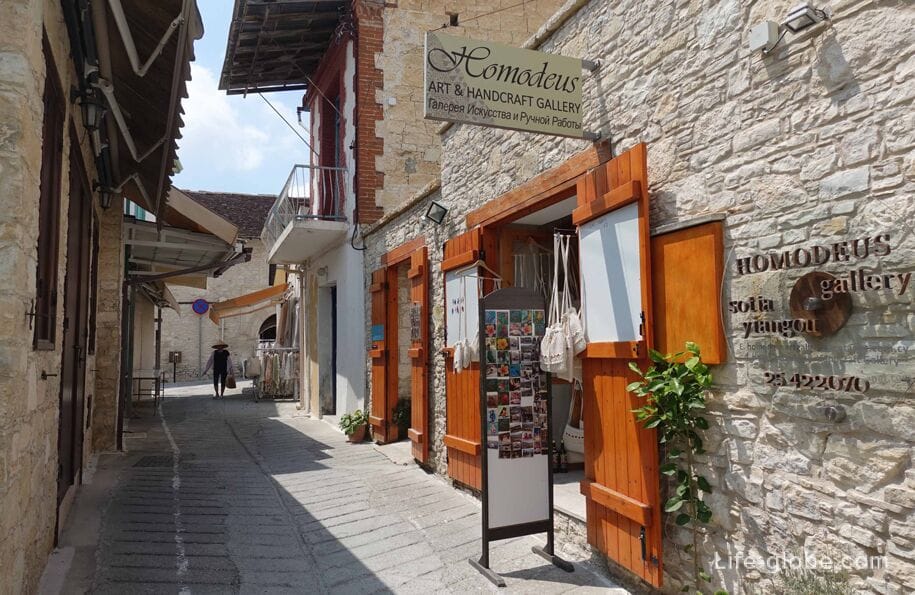
In small shops and private wineries-free wine tasting. Naturally, the sellers and the owners expect further acquisition tasters bottles - grape or other fruit drink.
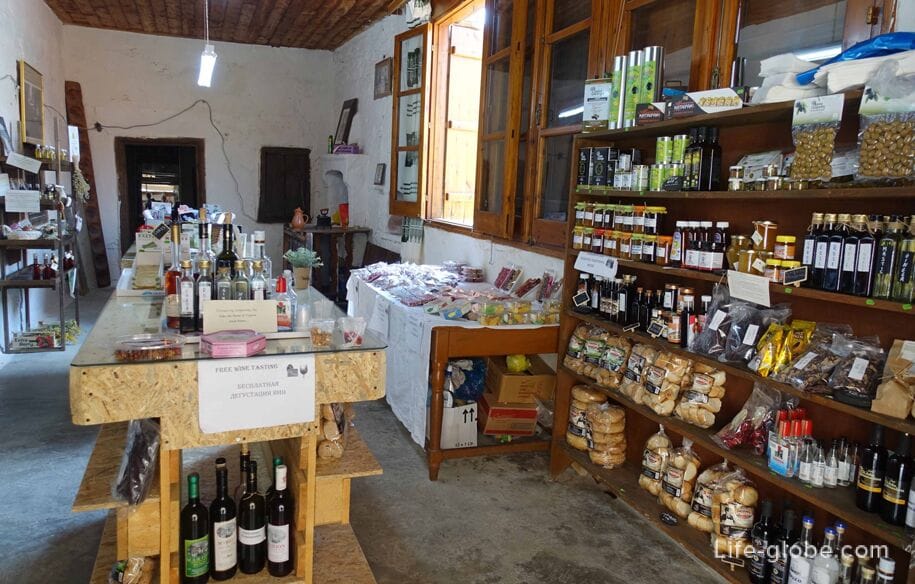
Also in omodhos, you can see the old wine press "LINOS" and visit a private house with a characteristic old village way "Socrates".

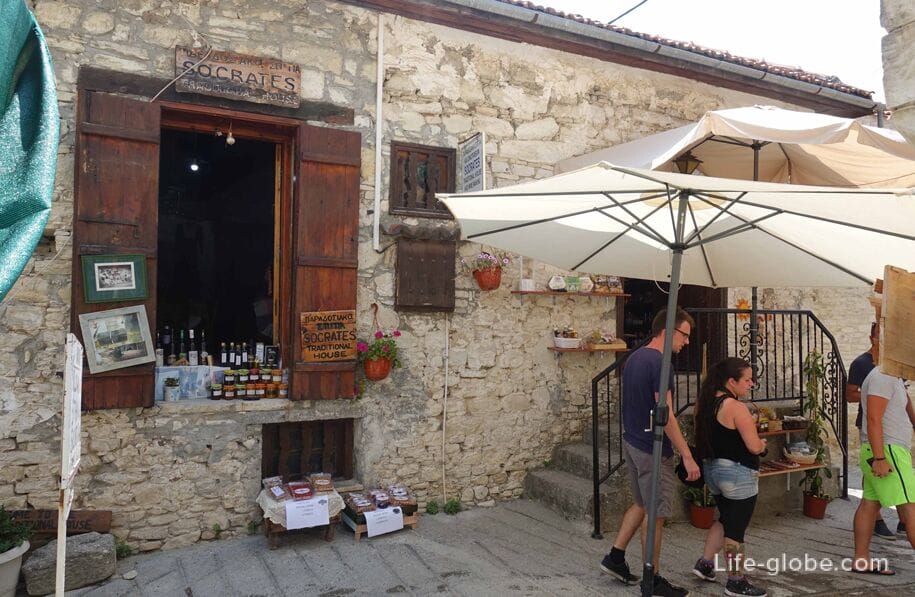
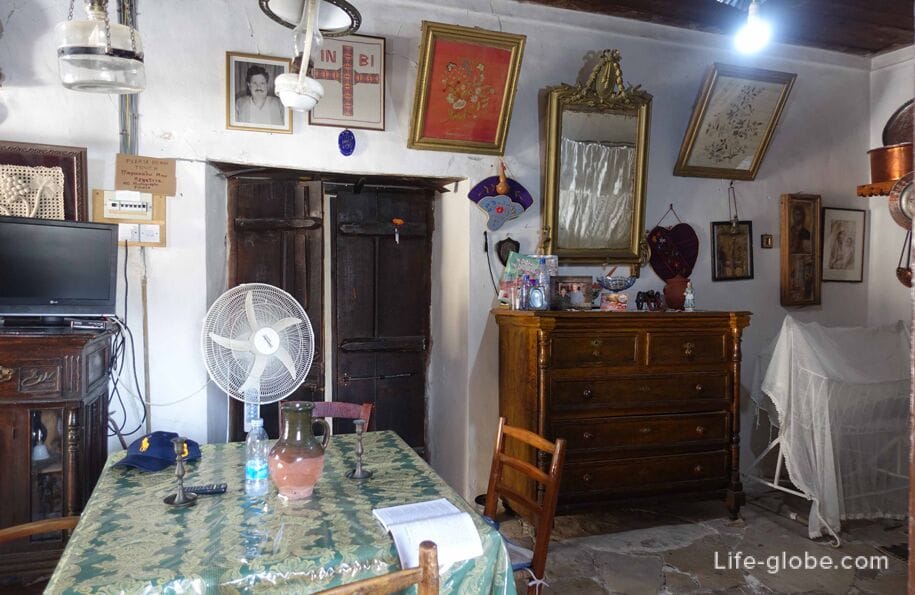
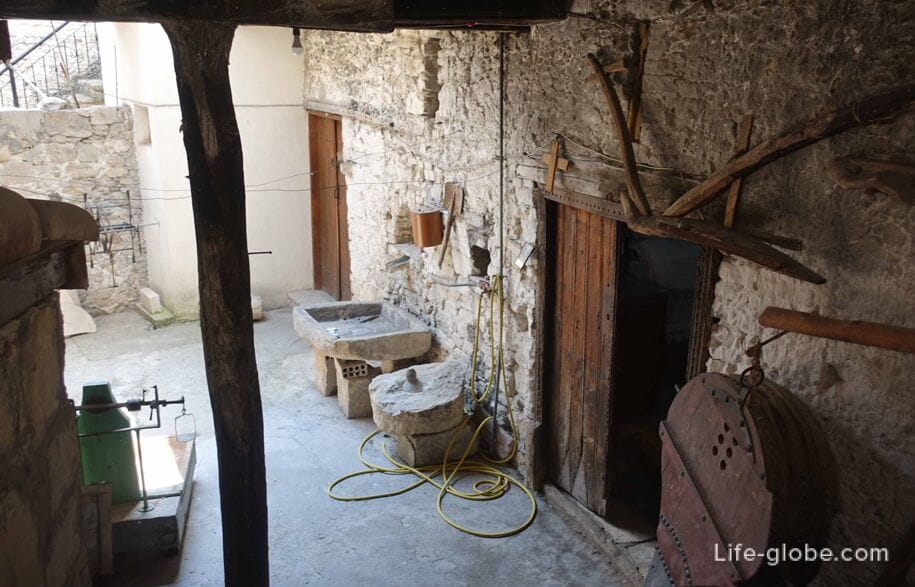
Every August the village hosts the annual wine festival - local wine offer to taste and buy local homemade wine, additionally you can participate in a real village festival with food, dancing and fun.
Narrow streets, stone houses with tiled roofs, traditional taverns, several restaurants and modern bars housed in traditional buildings, as well as an abundance of small shops and retail stores make a lasting impression.

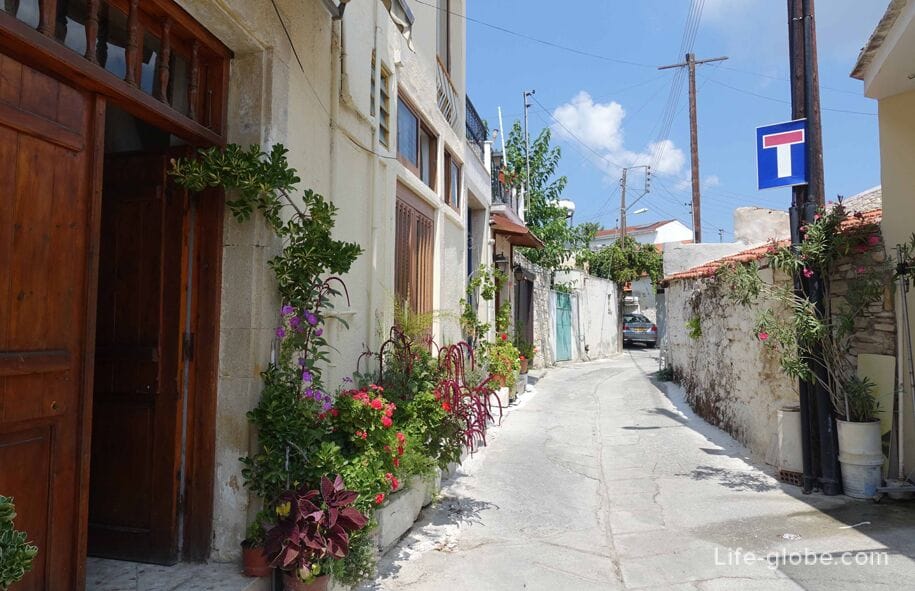
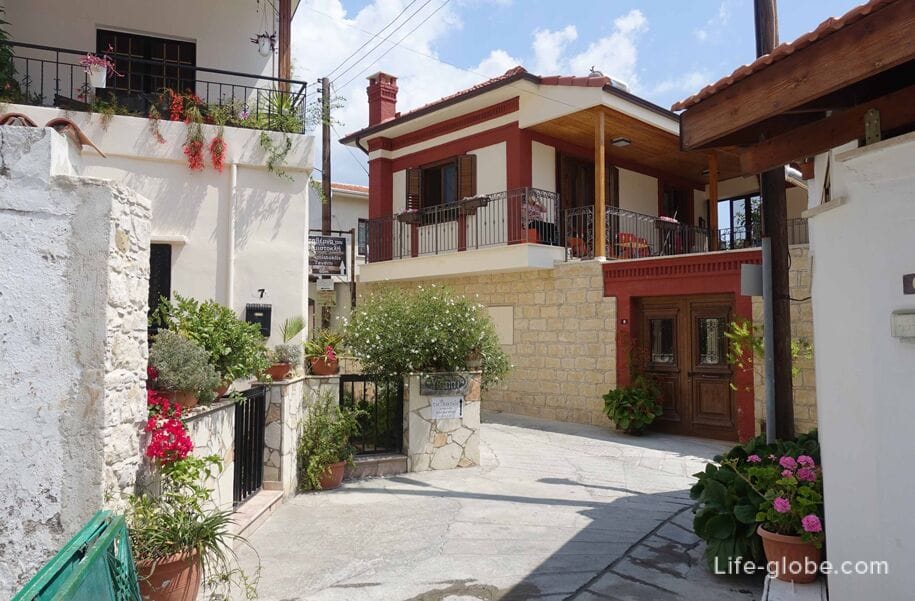

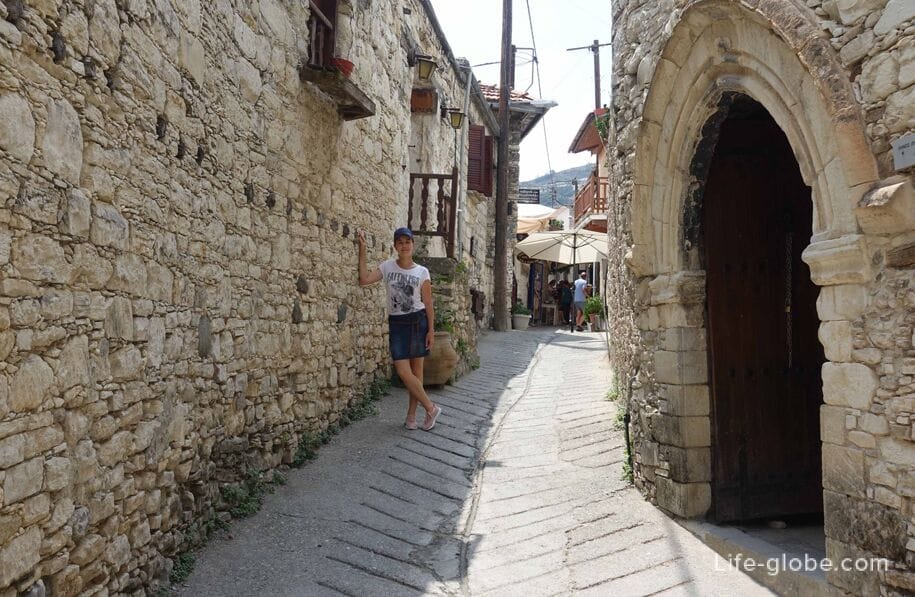
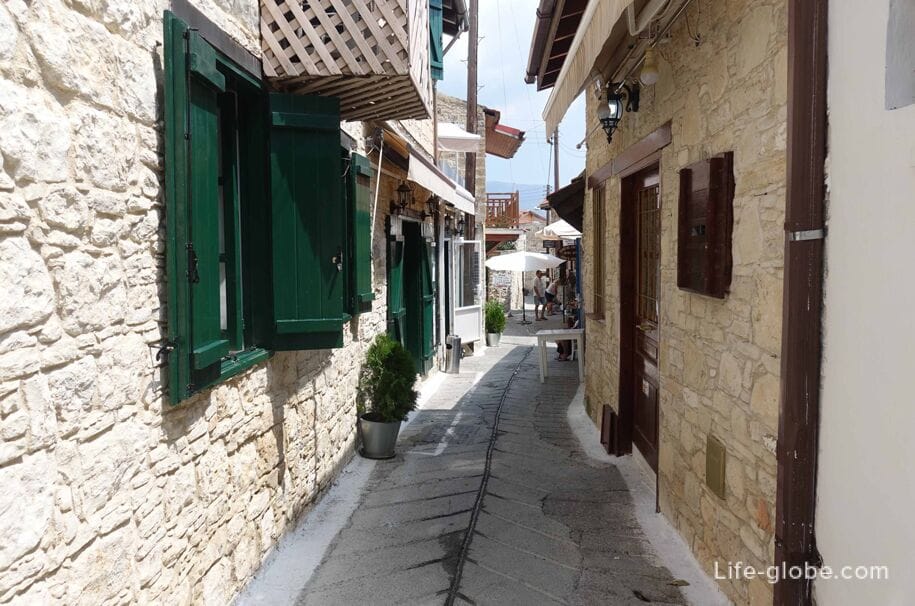

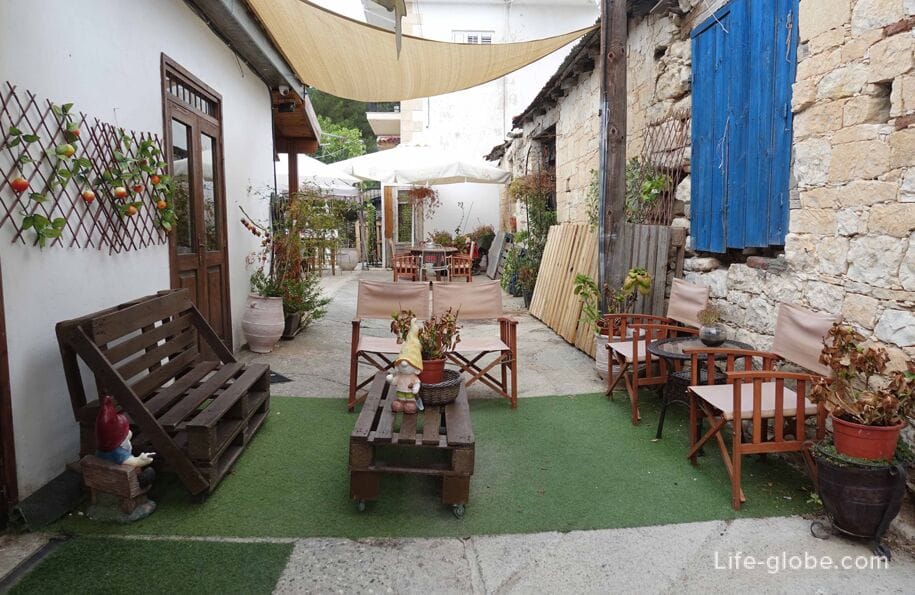

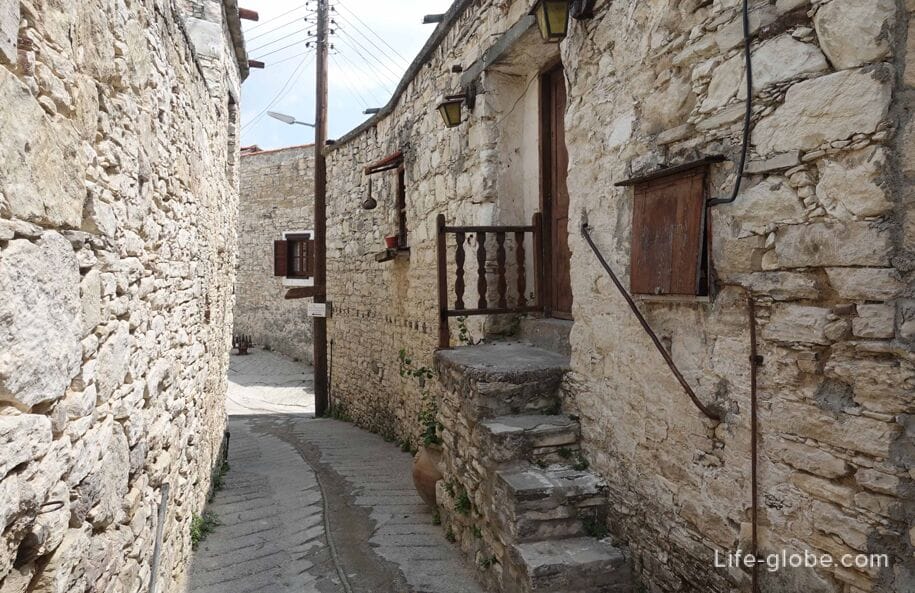

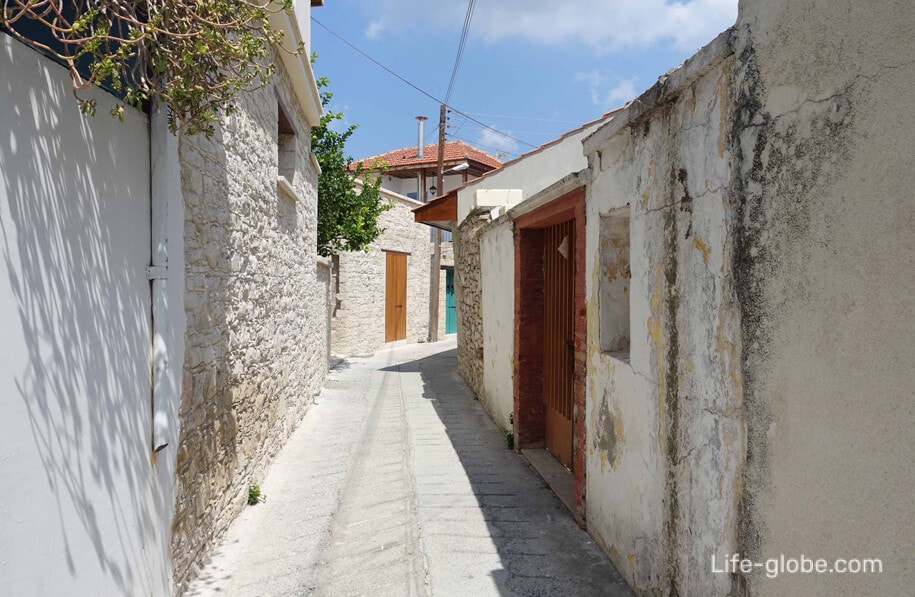
The inhabitants of Omodos, apart from growing vines, making wine and "zivania" (traditional alcoholic beverage), also handle the production of "soutzoukos" (wand of grape juice with almonds), "Palooza" (jelly made of grape must), "chieftaincy" (dried jelly from grape must, cut diamond-shaped pieces). Local fruit made of candy.
In addition to the local shops you can buy honey, nuts, butter, a variety of Souvenirs and handmade products from local artists.


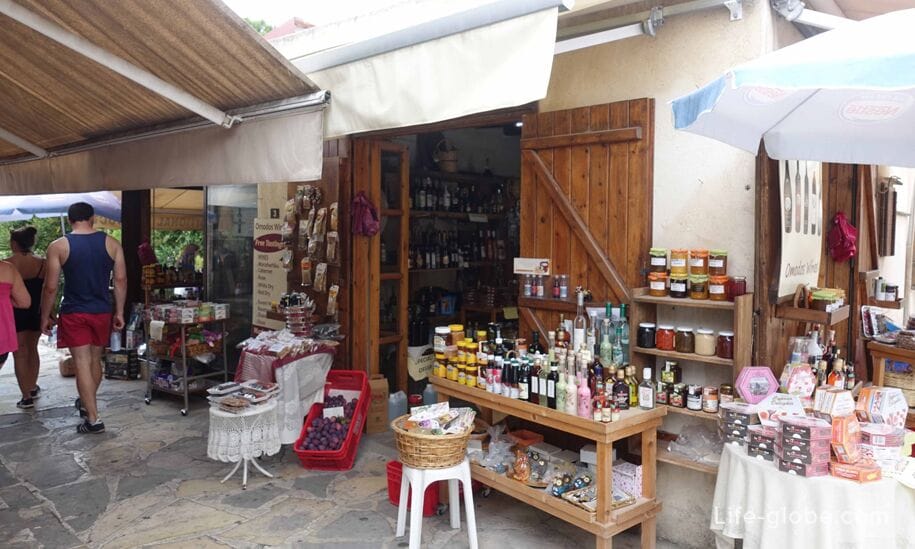
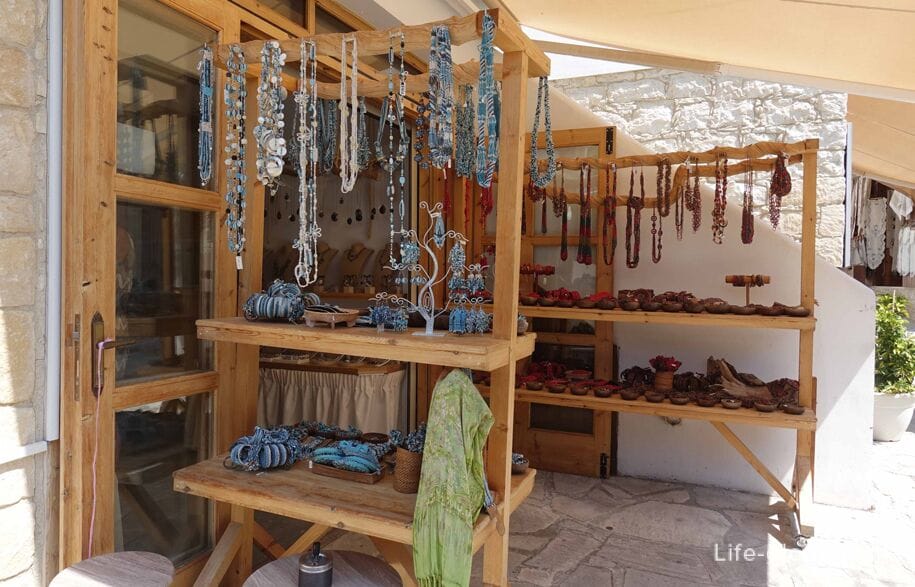
Also Omodos characteristic known throughout Cyprus rolls - "Arkadina malorka" - crispy rolls with yeast, the hardness resembling breadcrumbs.
The buns were first made in Omodos around 1880. Art "arktis" (the only spicy extract of chickpea to be used as yeast), which is the secret of the production of rolls, came in Omodos from Smyrna (today Izmir), thanks to the resident of Smyrna by the name of Hadjitasou, which - on arrival in Cyprus - met with a local man, married him, and together they settled in Omodos. Later she taught other women of the village to do "Arkutino".
Since ancient times, these rolls and crackers were served to the guests was offered during baptisms and weddings instead of sweets or Turkish sweets on offer today. Often they are offered with halloumi (cheese) or meat.
The Housewives of Omodos slice of bread 4-5 times a year for family needs. They also make some of the inhabitants for commercial purposes. Currently rolls you can buy in the shops in Omodos.
The taste of biscuits-crackers somewhat peculiar. Some shops give a free tasting of a small piece. So if you've never tried it, it probably makes sense to first taste and then decide whether to buy them.

Omodos is also known for lace - the famous "pipiles" (plural, embroidery). Locals love embroidery, make brocade, table cloth, stitched quilts, and embroidery and Chantilly lace.
Lace and embroidery, can be bought on the streets of Omodos.

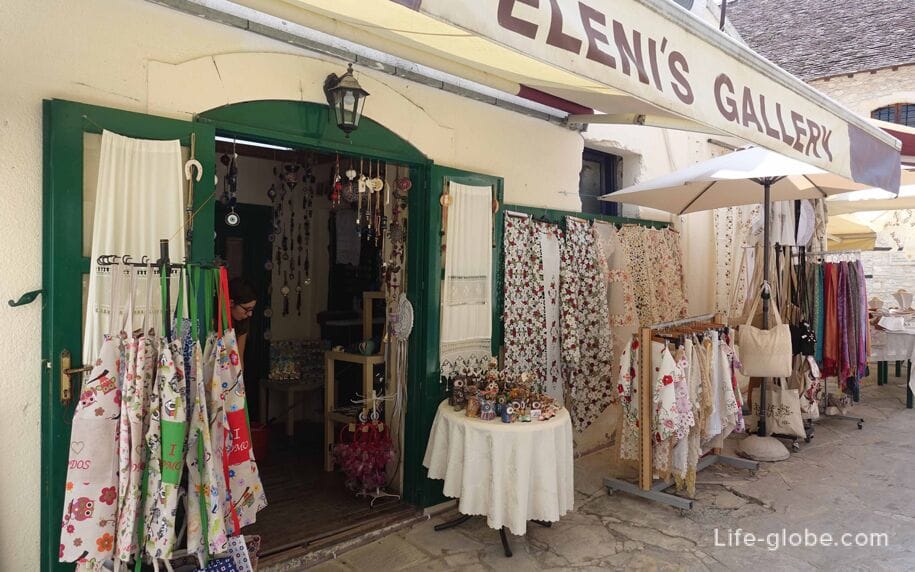
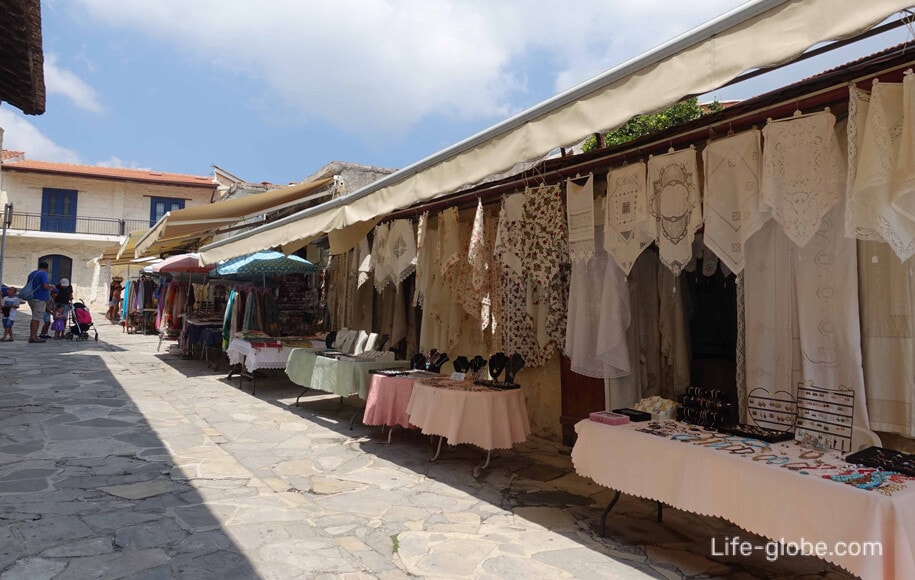
Near the exit of the village there is a small Park where you can relax under the lush canopy of pine trees.

Accommodation in omodhos not so much, the main part is represented by the holiday homes.
Meanwhile, all accommodation in omodhos to maintain the reputation and, in the opinion deserve the rating from "Awesome" (8,6) to "Excellent" (9,9).
All accommodation in omodhos, you can view and book here.
1. By taxi or car from any point of Cyprus. Cheap car hire in Cyprus...
The village has several function-equipped car parks.
2. Regarding transportation, Omodos is connected with the village of Mandria (4,6 km) in the North-East and the villages Vasa of Koilaniou (4 km.) and Malia (6,9 km) in the North-West.
Bus No. 40 from Limassol city centre, bus station Old hospital (Leontiou EMEL Central bus station) to the bus stop in the village of Omodos, a 10-minute walk from the monastery and main square.
A journey time of 1 hour 40 minutes 1 hour 50 minutes. The fare is € 1.50.
The schedule of the bus:
- from Limassol to Omodos: Monday - Friday 10:00, 11:30, 13:35, 16:30; Saturday 11:30, 15:15; Sunday 09:30, 15:15;
- of Omodos in Limassol: Monday - Friday 06:00, 07:20, 09:30, 15:00; Saturday, Sunday 07:30, 14:00.
Attention! The timetable and fares can vary, please check before you travel.

Most likely, the Omodos village that was founded in the late Byzantine period or early period of the Frank domination era, after the disappearance of the settlements Pano Kato (Upper and lower) Kupera that existed in the area.
According to legend, Komnenos Isaac, who was the tyrant of Cyprus (1185 - 1191), was hid in Kupera after the defeat of the king of England Richard the Lionheart at Kolossi, until Richard summoned him to Limassol for negotiation and truce. This means that Coopera existed in 1191, and disappeared later.
After the disappearance of Coopera settlements, new settlement, called Omodos, was founded near the monastery of the Holy cross.
In any case, the village did exist during the Frank domination era. The medieval chronicler Leontios Machairas notes that Omodos had been granted to the nobleman the Nobleman brie by the king of Cyprus Jacob I to his election in 1832. The village was marked on old maps as Komodos, Homoios and also Omodos.
In the Greek there are three interpretations of the name of the village "Omodos":
1. From the Cypriot word "modos", which means "not to hurry" / "neatly" / "caution".
2. Many of the streets leading to nearby villages, originate from this village. Making adverbs "omou" - translated "with" and the word "odos" - which means "street" was formed the name "Omodos".
3. In iranskih documents reported that the feudal Lord Homodeus lived in this region, and perhaps the village was named in his honor.